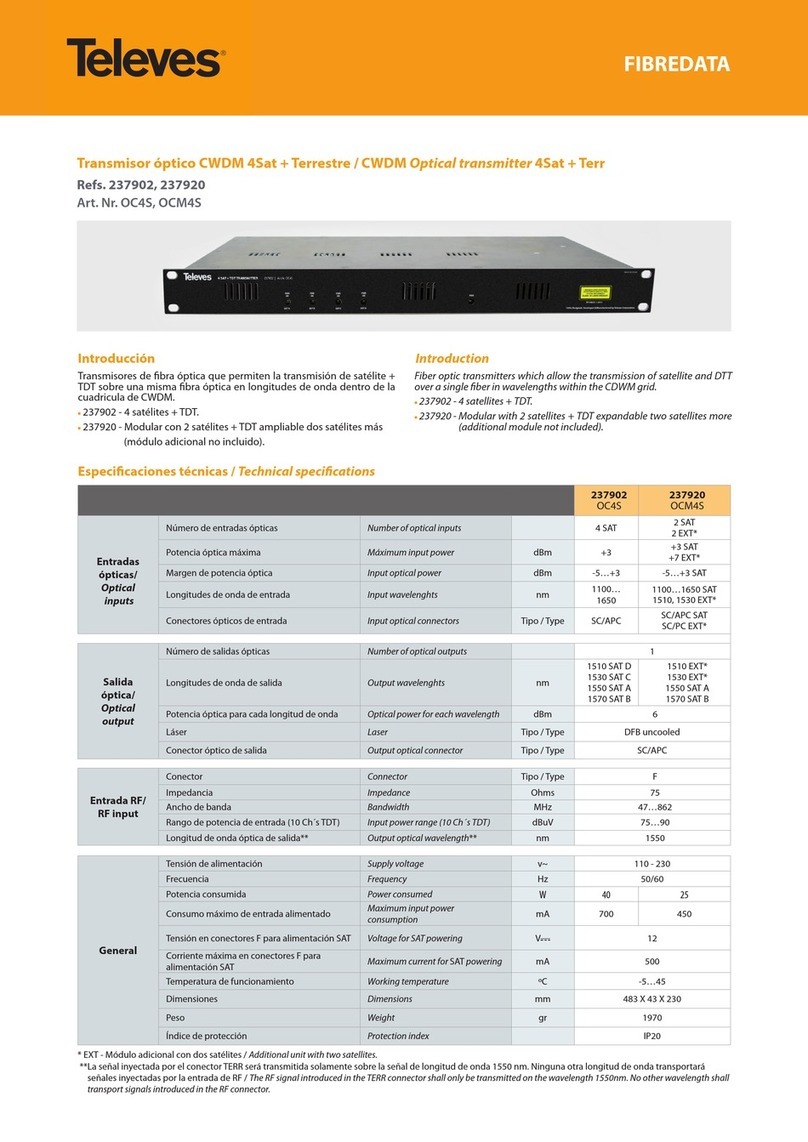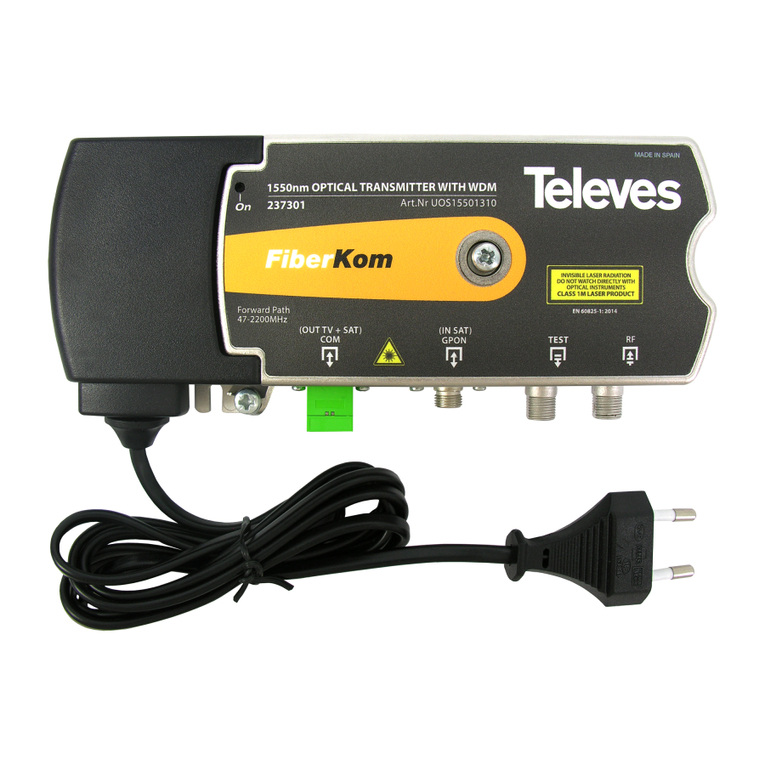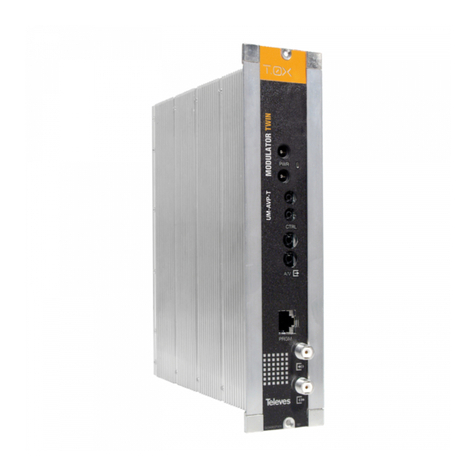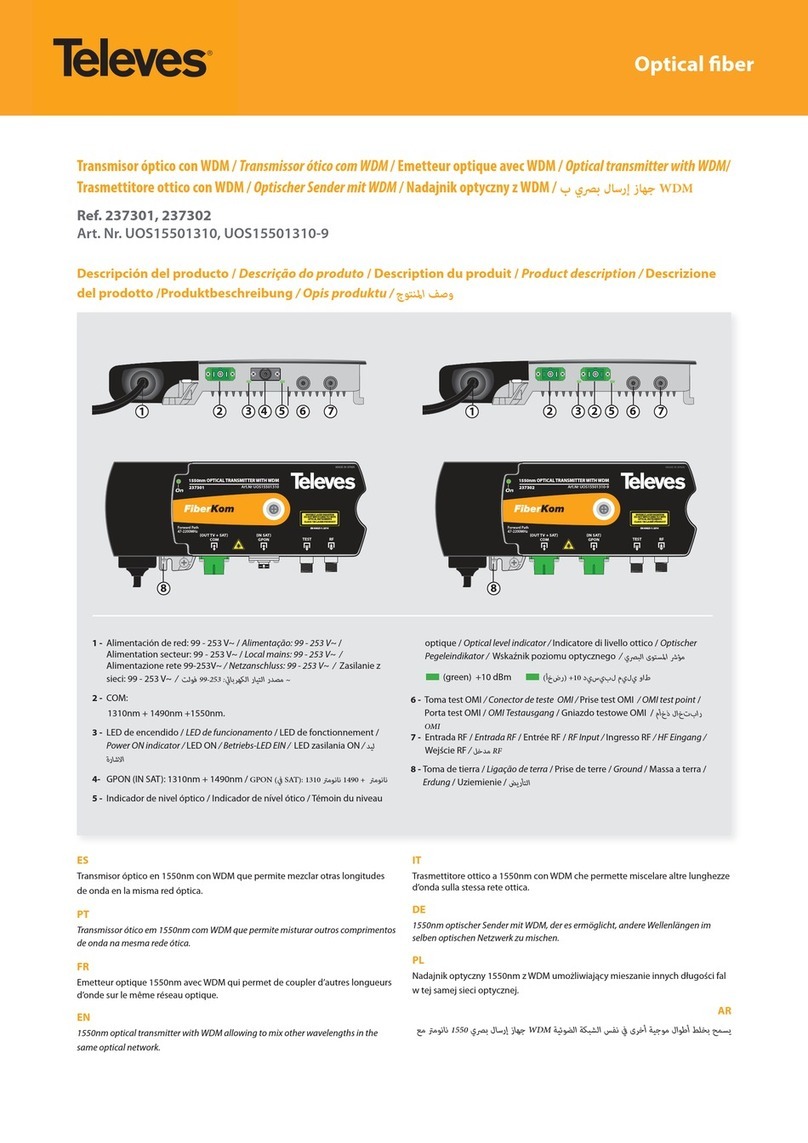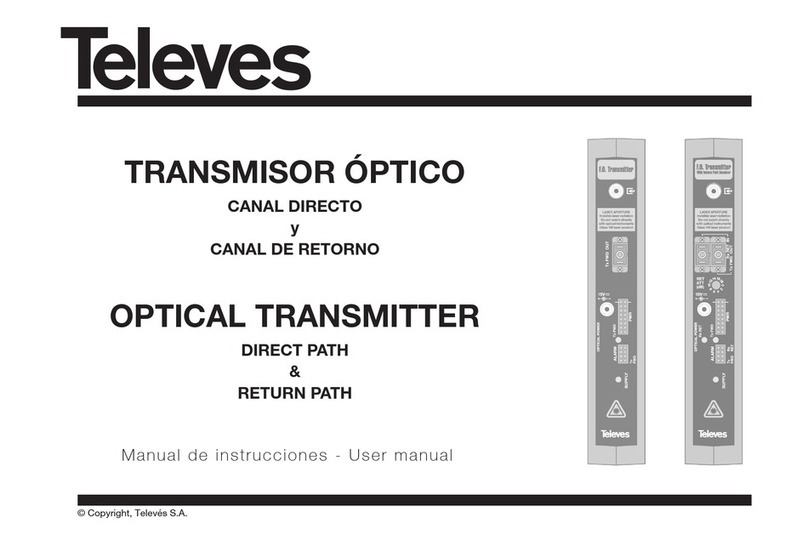Optical Fiber Transmitter and Receiver 4
Important safety instructions:
General installation conditions:
Before handling or connecting the equipment,
please read this manual.
Do not obstruct the equipment’s ventilation
system.
Please allow air circulation around the
equipment.
Do not place the equipment near sources of heat
or in excessively moisture conditions.
Do not place the equipment where it may be
aected by strong vibrations or knocks.
How to use the equipment safely:
If any liquid or object falls inside the equipment,
please contact a specialized technician.
Do not connect the equipment until all the other
connections have been made.
Instructions for the optical
connection:
For the optical connection, a single mode bre
cable is used with an SC/APC-type connector.
Remove the dust cap from the optical connector
located on the front panel, as well as the one
of the connector of the single mode ber to be
connected to the equipment.
Connect the cable to the device, carefully
slotting the guides together for both connectors,
pushing the connector all the way in.
Precautionary measures with the
connection point:
Take special care to avoid damaging the
unprotected ends of the connectors, as small
scratches, impurities and/or particles of dirt, oil,
grease, sweat etc. may signicantly aect the
quality of the signal.
To clean the ends of the connectors, wipe with
an appropriate cleaning wipe moistened with
isopropyl alcohol, specic for the cleaning
of optical elements. Make sure the alcohol
evaporates fully before connecting.
Keep the connector covers and cable caps in a
safe place in case they are needed in the future.
Always t the covers on the connectors of devices
that are not connected to cables to prevent the
laser beam from damaging the eyes.
Avoid turning on the transmitter without having
the bre optic cable connected.
Safety measures
Warning.-
This product emits an invisible laser beam. Avoid
contact with laser radiation. The use of equipment
such as binoculars or magnifying glasses may
increase damage caused to the eyes.
According to EN60825-1_ 2007
Caution
- The use of controls or adjustments, or procedures
other than those specied in this manual may
result in exposure of body parts to harmful
radiation.
- Carefully read and observe the instructions given
in this manual, and keep it for future reference.
- Do not use the equipment in any way that does
not comply with the operating instructions or
in any conditions that exceed the stipulated
atmospheric specications.
- This equipment is not user-serviceable. Should
you require assistance, contact our technical
service department.
- Never point the laser beam intentionally at
people or animals.
